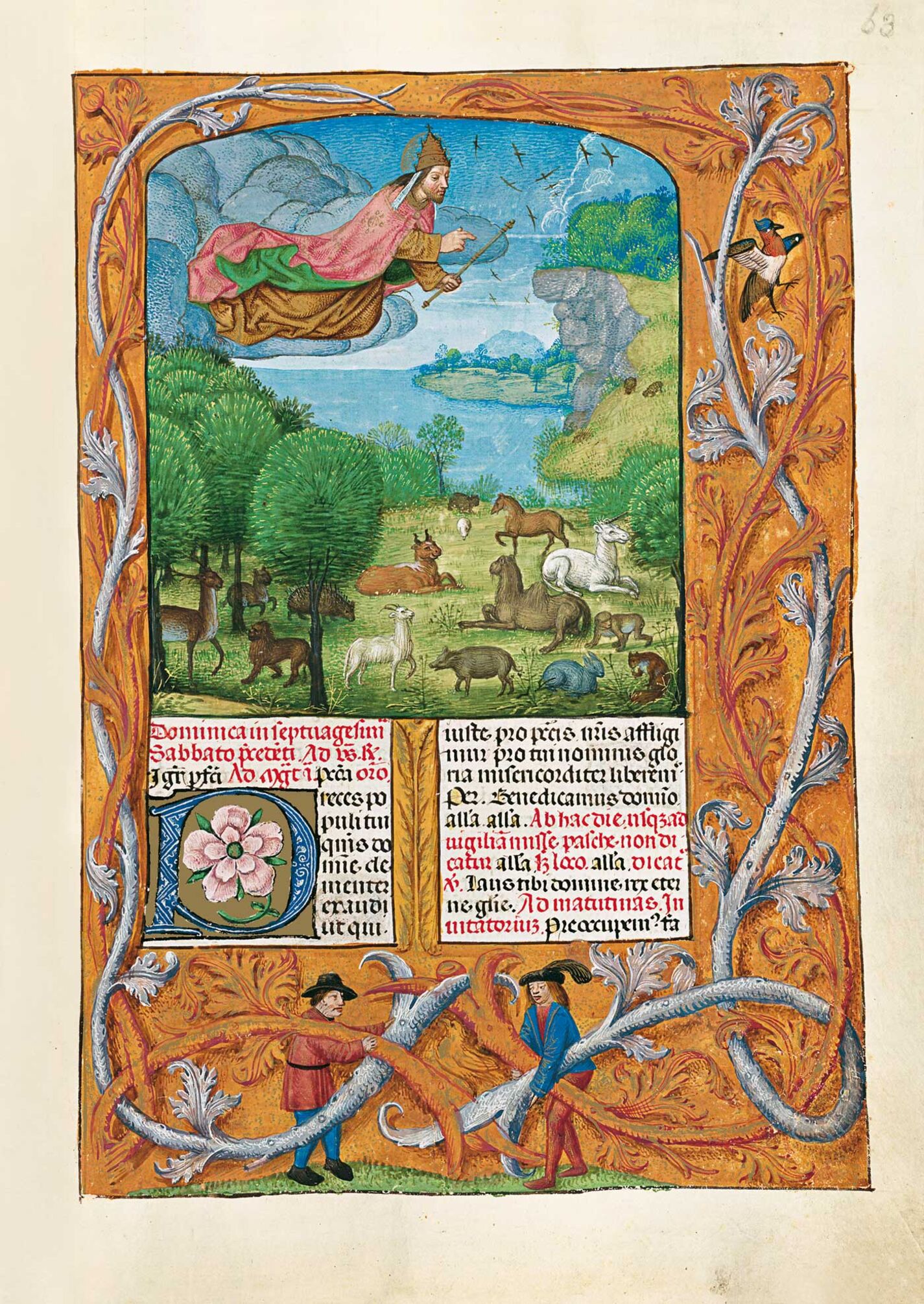This painting in the Temporale belongs to the first phase in the manufacture of the
Isabella Breviary, mainly the work of the Master of the Dresden Prayer Book (c. 1440-c. 1520) possibly from Utrecht or France, having been identified, in the latter instance, with the painter Didier de la Rivière. He is one of the most original Flemish artists of the latter half of the 15th century, influenced by Willem Vrelant and Philippe de Mazerolles, and characterised by his expressive atmospheric conditions – which were to influence Simon Bening (1483/1484-1561) as can be seen in the calendar in the
Book of Golf (London, The British Library, Add. Ms. 24098) – and his lively, imaginative biblical scenes which he endowed with humour, irony and unexpected narrative interest, occasionally choosing unusual themes. Also noteworthy are the eloquent gestures and expressive faces of his figures which underline the main event in each episode. On many occasions, his figures are depicted from unusual angles, hence distant views are quite common in his compositions.
The painting shows God the Father as a young man in a pluvial, crowned with a papal tiara with three diadems and a cross on top, and holding a sceptre symbolising his power in his left hand. He blesses the land as he flies over, causing plant and animal life to appear. The animals are represented in the sky by countless birds and on earth by domesticated animals or those typical of western Europe such as a cat, rabbit, boar, deer, bull, horse and goat; exotic animals like the dromedary, monkey and lion; and legendary animals like the unicorn, all in a clearing in a wooded landscape surrounded by a great expanse of water with a rocky outcrop on the shore.
The representation of the Creator as a young man with papal attributes appeared for the first time in a manuscript of the
City of God, dated c. 1375 (Paris, Bibliothèque nationale, ms. fr. 22913, f. 408v). The theological concept conveyed by the pontifical figure matches St Augustine’s description of God: the Supreme Being that makes the Father, the Son and the Holy Ghost one, i.e. the image of the Holy Trinity is reduced to a single person: the image of God in papal vestments.
The border around the painting and text features two pairs of acanthus painted as gold and white cameos held by two interwoven figures in the
bas de page also containing two birds. Inside the initial P of the text is a large, trompe-l’oeil rosacea against a golden ground.
